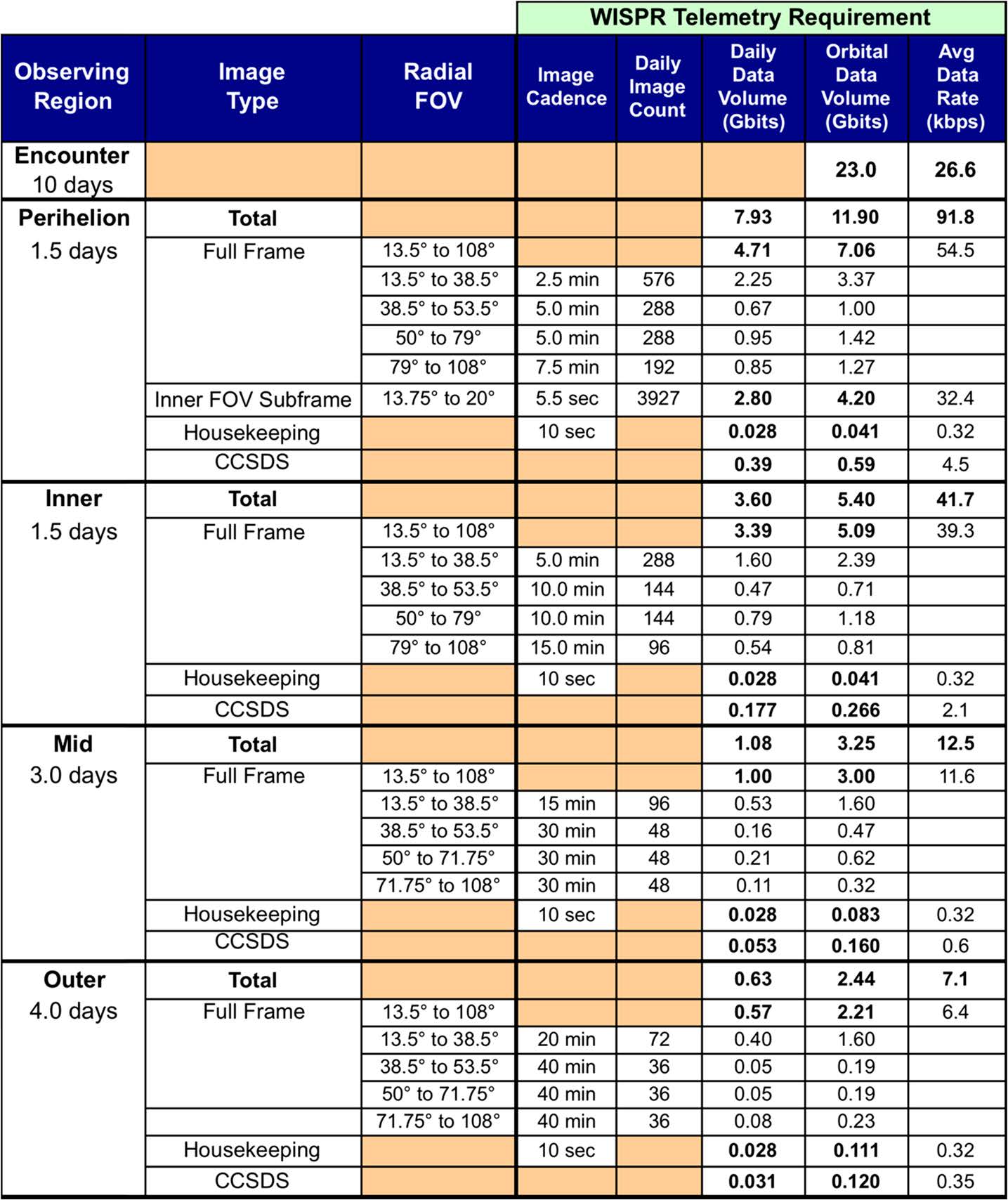We plan a limited set of observations for instrument checkout and calibration following instrument turn-on on the approach to each solar encounter. A few images per day will be taken for up to ten days while the spacecraft distance from the Sun is less than 0.5 AU on the inbound segment of each orbit. Some of these images may involve small off-points of the spacecraft from the Sun (up to a few arc minutes) to verify the stray light performance of the instrument. These data would need to be downlinked prior to the solar encounter period to be useful for planning purposes.
For photometric calibration, WISPR compares selected background stars in the images to star catalog positions and magnitudes. Thanks to the wide FOV of WISPR, no spacecraft maneuver is required to capture a standard set of calibration stars. These calibrations are used to verify the pre-launch ground photometric calibration and to monitor the WISPR telescope throughput loss during the mission. The final photometric calibration accuracy using standard stars is ∼3 %, based on procedures developed and used for SOHO/LASCO and STEREO/SECCHI. Between perihelion passes, a three-phase calibration sequence must be performed: (1) to determine if any degradation of the detector and/or the lenses occurred during the perihelion pass, where the instrument might be subjected to high radiation exposure, (2) to anneal the APS detector, and (3) to perform a calibration sequence to determine the pre-perihelion calibration. Photometry changes are fixed by the stellar transits combined with LED calibration lamp images.

